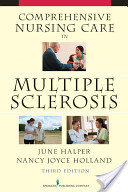Sickle cell anemia or sickle cell disease a genetic blood disorder, which passed down through families, characterized by red blood cells that assume an abnormal, rigid, sickle shape. Red blood cells contain an iron-rich protein called hemoglobin. This protein carries oxygen from the lungs to the rest of the body.
In sickle cell anemia, hemoglobin, in the presence of low oxygen tension (caused by hypoxia, acidosis, dehydration or fever), it's crystallizes quickly, causing RBCs to bend in to crescent (or sickle) shape. The sickle cells accumulate then obstructing capillary flow throughout the body.
The thickened blood results in capillary stasis, obstructed blood flow and thrombosis. Ischemia occurs distal to thrombosis, causing further oxygen depletion and sickling, which can lead necrosis. The body hemolyzes the fragile sickle cells, quickly producing severe anemia.
Possible causes of sickle cell anemia is
genetic inheritance, that the child inherits the gene that produces hemoglobin S from two healthy parents who carry the defective gene.
genetic inheritance, that the child inherits the gene that produces hemoglobin S from two healthy parents who carry the defective gene.
Nursing Care Plan For Sickle Cell Anemia:
Assessment findings in sickle cell anemia is vary with the child's age. Before age 4 months, symptoms are rare (because fetal hemoglobin prevents excessive sickling).
- Infants: Splenomegaly from sequestered RBCs, Colic from pain caused by an abdominal infarction and Dactylitis or hand-foot syndrome from infarction of the small bones of the hands and feet.
- Toddlers and preschoolers: Hypovolemia and shock from sequestration of large amounts of blood in spleen and Pain at site of vaso-occlusive crisis.
- School age children and adolescents: Enuresis, Extreme pain at crisis site, Poor healing of leg wounds from inadequate peripheral circulation of oxygenated blood, Delayed growth and development and delayed sexual maturity, History of pneumococcal pneumonia and other infection due to atrophied spleen and Priapism.
Diagnostic evaluation for sickle cell anemia:
- Laboratory studies show hemoglobin level is 6 to 9 g/dl (in toddler).
- RBCs are crescent-shaped and prone to agglutination.
- Less than 50 % hemoglobin S indicates sickle cell trait, but if more than that indicate sickle cell disease.
Nursing Diagnosis for sickle cell anemia:
- 1. Acute pain.
- 2. Ineffective tissue perfusion (peripheral).
- 3. Risk for infection.
- 4. Deficient knowledge.
- 5. Ineffective individual coping.
- 6. Compromised family coping.
Treatment for sickle cell anemia:
- Bed rest.
- Hydration with I.V fluid (may be increased to 3 L {2.8 qt} per day during crisis).
- Short term oxygen therapy (long term oxygen decreases bone marrow activity, further aggravating anemia).
- Treatment of acidosis as necessary.
- Transfusion therapy as necessary
Planing and goals of nursing care plan for sickle cell anemia:
- The child will maintain adequate levels of blood oxygen concentration.
- The child's progressive sickling process will be halted.
- The child will receive pain relief.
- The child will be free from infection.
- The parents and child will verbalize knowledge about the condition, treatment and option for genetic counseling.
Nursing Intervention for sickle cell anemia:
- Administer sufficient pain medication to promote comfort (lack of pain relief can cause further sickling).
- Assess cardiovascular, respiratory and neurologic status.
- Assess vision to monitor for retinal infarction.
- Assess for symptoms of acute chest syndrome from a pulmonary infarction to identify early complications.
- Give large amount of oral or I.V fluids, to prevent fluid volume deficit, induce hemodilution and prevent further sickling and additional complications.
- Maintain the child's normal body temperature, to prevent stress and maintain adequate metabolic state.
- Monitor vital sign and intake-output to assess renal function and hydration status.
- Reduce the child's energy expenditure to improve oxygenation.
- Provide proper skin care to prevent skin breakdown.
- Remove tight clothing to prevent inadequate circulation.
- Teach the child relaxation techniques to decrease the child's stress level.
- Suggest family screening and initiate genetic counseling to identify possible carries of the disease.
Health teaching to child with sickle cell anemia and family members to ensure adequate knowledge about condition and treatment:
- Avoiding high altitudes.
- Avoiding activities that promote the crisis, such as excessive exercise, deep sea diving or mountain climbing.
- Avoiding aspirin use, which enhances acidosis and promotes sickling.
- Recognizing sign of infection and action should take to prevent infection.
- Seeking early treatment of illness to prevent dehydration.
Nursing Evaluation for sickle cell anemia:
- The child will improved hemoglobin level without sign and symptoms of sickle cell crisis.
- The child will be infection-free at discharge.
- The child will continue to perform age-appropriate developmental task.
- The child's parents will monitor child health status, avoid situations that precipitate a crisis and seek early aggressive medical care for infection or sign of crisis.
- The parents relate an awareness of the child's condition, the importance of early treatment and option for genetic counseling.






 :.
:.




















